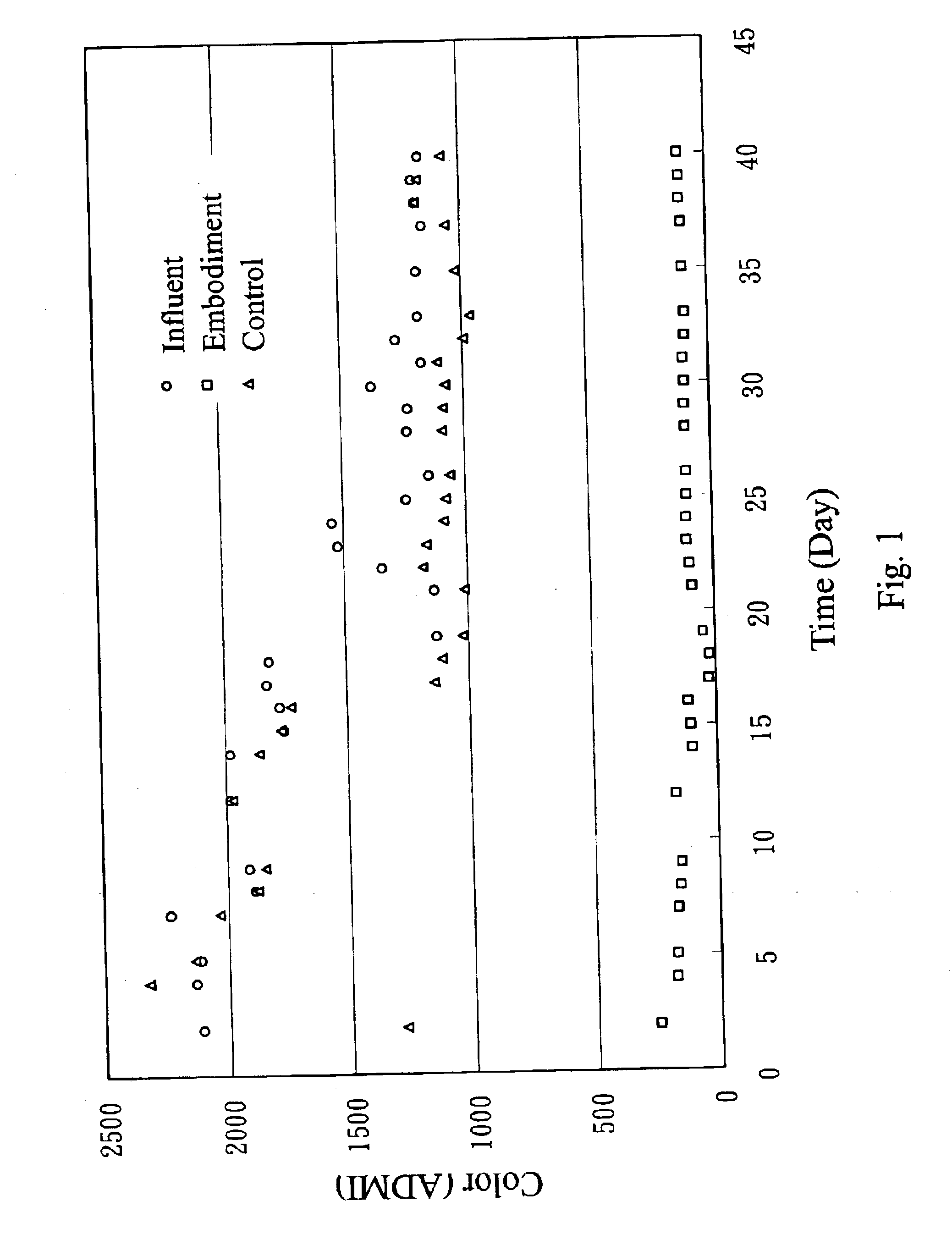Method for treating wastewater/water with fixed-film microorganism on porous carriers
- Summary
- Abstract
- Description
- Claims
- Application Information
AI Technical Summary
Benefits of technology
Problems solved by technology
Method used
Image
Examples
Embodiment Construction
The present invention discloses a method of wastewater / water treatment comprising introducing an influent into a reactor so that a portion of contaminants in the influent is decomposed by microorganism in the reactor during a retention time of the influent in the reactor, and thus an effluent has a less amount of contaminants in comparison with the influent, wherein the improvement comprises the microorganism is grown on a modified porous carrier in the reactor, said modified porous carrier comprising a polymer foam and adsorbent particles entrapped in pores of the polymer foam.
Preferably, said polymer foam has a density ranging from 10 kg / m3 to 60 kg / m3, and a porosity ranging from 30% to 100%; and wherein said adsorbent particles have a size ranging from 0.1 to 60 meshes.
Preferably, said modified porous carrier contains 1-100% of said adsorbent particles, based on the weight of the polymer foam.
Preferably, wherein said polymer foam is a polyurethane foam; wherein said adsorbent pa...
PUM
 Login to View More
Login to View More Abstract
Description
Claims
Application Information
 Login to View More
Login to View More - R&D
- Intellectual Property
- Life Sciences
- Materials
- Tech Scout
- Unparalleled Data Quality
- Higher Quality Content
- 60% Fewer Hallucinations
Browse by: Latest US Patents, China's latest patents, Technical Efficacy Thesaurus, Application Domain, Technology Topic, Popular Technical Reports.
© 2025 PatSnap. All rights reserved.Legal|Privacy policy|Modern Slavery Act Transparency Statement|Sitemap|About US| Contact US: help@patsnap.com

